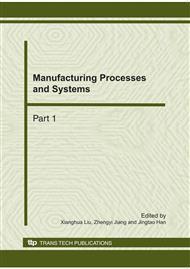p.1689
p.1695
p.1701
p.1705
p.1710
p.1717
p.1722
p.1726
p.1730
The Absorption of TiO2 Nanotube-Dye Sensitization Solar Cells by Thermo-Compression Systems in Dye Molecules
Abstract:
Dye-Sensitized Solar Cells (DSSC) are currently under development worldwide. Photoelectric conversion efficiency cannot yet rival the efficiency levels of commercial silicon solar cells. Nonetheless, due to the advantages of simple production, low cost and accessibility which allows for large-scale production, photoelectric conversion efficiency is still one of the technologies under urgent development in the next stage of new solar energy. Usually, laboratories adopt the method of absorbing dyes on film electrodes by placing the specimen sample in the dye for a lengthy soaking period (12 hours). Such an approach merely yields the result of the dye molecules being absorbed on the TiO2 Nanotube, which does not produce time efficiency conducive to future commercialization. Such an improvement in efficiency could have a major impact on the mass production process. Consequently, this study employs a hot-pressure system on a jack with molding to distinguish pressurization, temperature and heating in the pressurization processes; we discovered from the experimental results that the best performance resulted from the heating process. This process not only sped up the diffusion velocity of the dye molecules being absorbed on the tube but also enhanced the photoelectric efficiency for solar cells. This could thereby lead to substantial time saving in the dye soaking process and greatly enhanced the economic benefits of products.
Info:
Periodical:
Pages:
1710-1716
Citation:
Online since:
October 2010
Authors:
Price:
Сopyright:
© 2011 Trans Tech Publications Ltd. All Rights Reserved
Share:
Citation:



